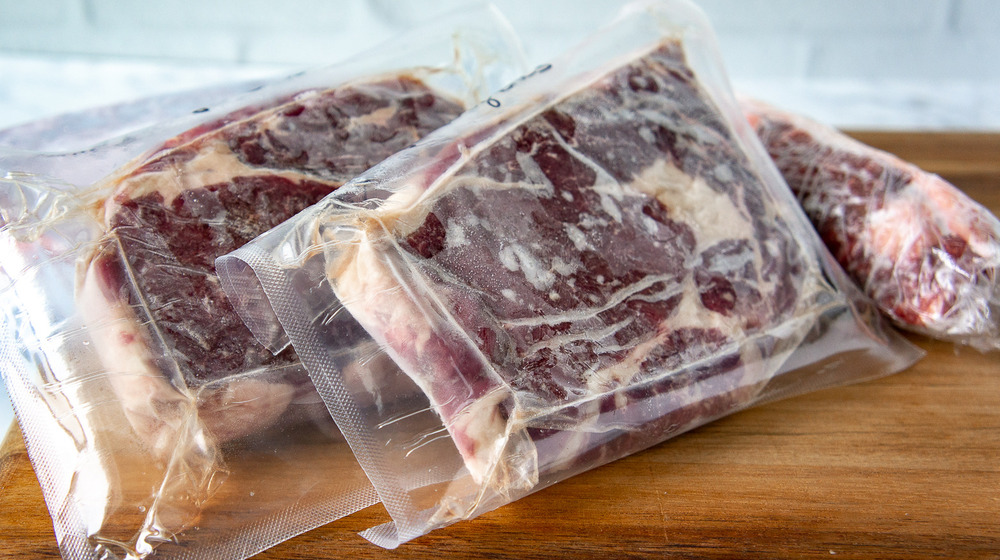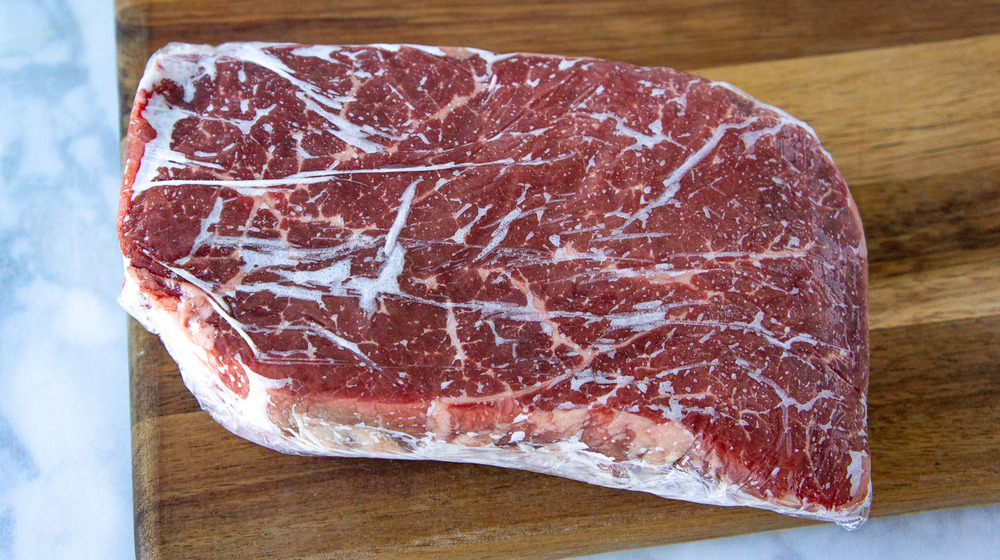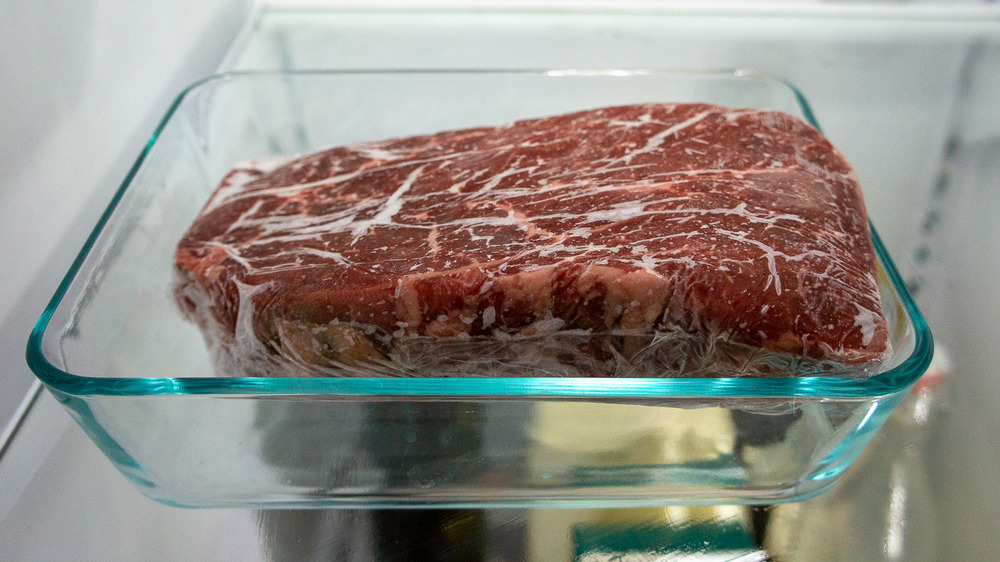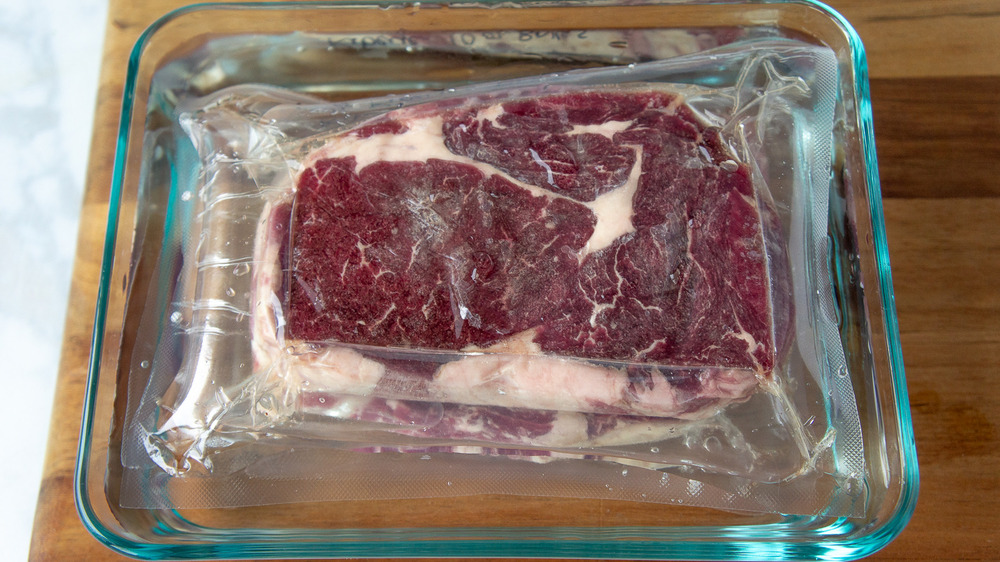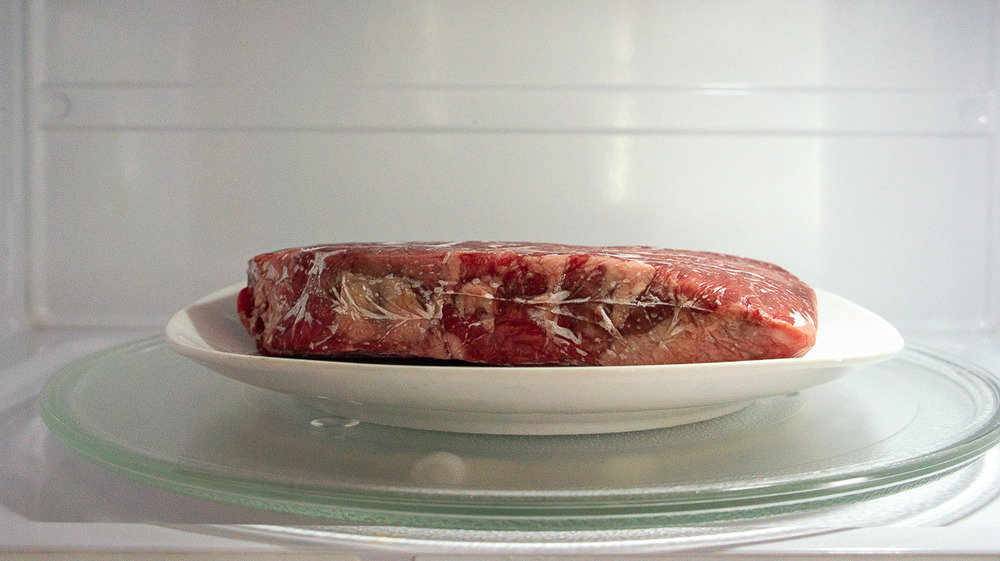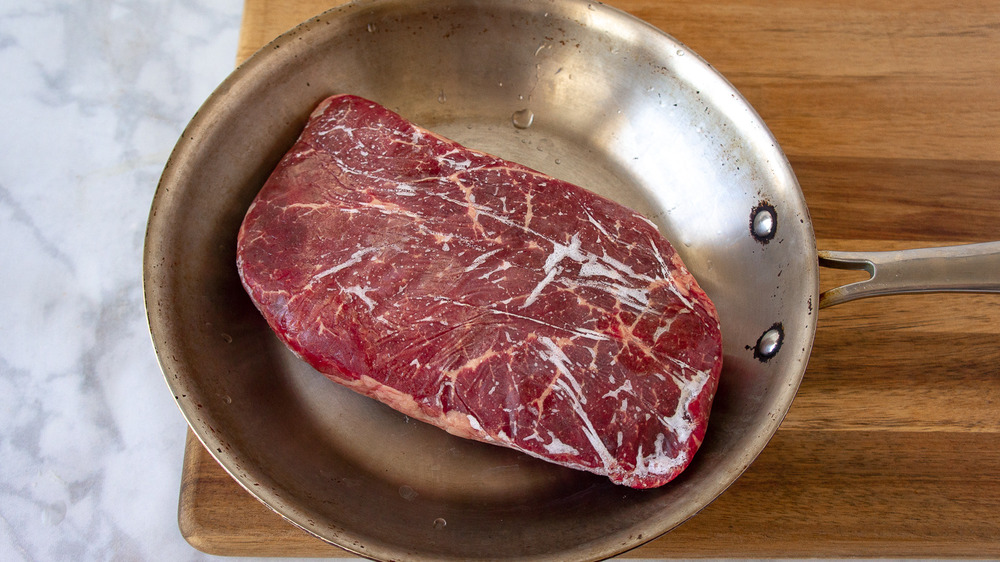How To Defrost Steak
It's finally time to pull that gorgeously marbled T-bone or sirloin from the freezer. Or, maybe you have a few small filet mignons you've been saving up for company and tonight's the night. Whatever steak is nestled in your freezer right now, in order to enjoy the delicious cut of meat at its best, it's key to allow the steak to thaw in a food-safe way.
We've got all the tips for how to defrost a steak right here. We'll walk you through two easy and safe methods that keep your steak happy, as well as two somewhat trickier methods that can get the steaks cooking more quickly. No matter which you choose, we want to help make sure your steaks are delicious, juicy, and, most of all, still good when you go to cook them.
Avoid the mistakes that could ruin or spoil the steaks your freezer has been keeping safe for you, and learn how to thaw them properly. Here's how to defrost steak the right way.
Get more cooking tips and recipes from Mikayla on her blog The Flour Handprint.
How to defrost a steak without ruining it
There are three common ways to thaw a steak. Any one of them can get the job done, but not all of them were created equally.
From the long and gentle fridge thaw, to defrosting on the counter, to popping your frozen steak in the microwave, each method has its advantages and its disadvantages. Ultimately, it's all about the time you have to give your steaks and when you're planning to cook.
Thaw steaks in the fridge for no-fail, perfectly defrosted meat
The first and simplest method is simply transferring a frozen steak to the fridge and letting it come to a cold fridge temperature before cooking.
This most certainly takes the longest of the three methods, but it's also the safest. By placing a frozen steak in the fridge, it never comes above the food-safe temperature. If the steak isn't exposed to warmer temperatures, then it's far less likely to spoil.
To defrost a steak in the fridge, just transfer the steak — either wrapped or not — into a bowl in the fridge. Let it thaw for 24 to 48 hours, or until the steak is thawed throughout. Don't skip the bowl or a similar container. Thawing steaks are notorious for dripping and leaking and raw meat juice is no fun to clean out of your fridge.
Defrosting steak on the countertop is safe when done correctly
Just plopping a frozen steak on the counter and letting it thaw is not safe. The warmer air temperatures of most households can lead to bacteria growth, potential food poisoning concerns, and spoiled steaks.
However, you can thaw steaks on the counter if they're placed in a bowl of cool water that is regularly checked and changed. Simply place your steaks in a large bowl. It needs to be big enough that the water can come up around all sides of the steak.
Fill the bowl up with enough cool — but not ice-cold — water to surround the frozen steak. Cool tap water from your sink is just fine. Let it sit for 30 minutes, then check it. Flip the steak over and discard the icy water for fresh, cool water. This method thaws most steaks within 2 hours.
If you're working with large roasts, it may be best to devote a bucket or half your sink to thawing it in water. If you go with this particular method, be prepared to refresh the water for several hours.
Put frozen steak in the microwave for the quickest, but riskiest defrost method
When you're in a hurry but determined to have that steak for dinner, the microwave can be a great ally — or a great disappointment. While most microwaves have a defrost setting, thawing the steaks too hot or too fast can lead to par cooking or spoilage from bacteria growth.
If you still insist on using this method, it's best to read the instructions for your specific model and choose the gentlest, slowest power and time range possible. Whatever the setting, keep a close eye on steak throughout the process. If the steak begins to cook in the microwave, you may end up with tough or unevenly cooked meat. And once it's thawed, be sure to cook your steak right away to reduce the risk of food-borne illness.
Finally, cook steak from frozen to skip thawing all together
For the absolute fastest way to defrost a steak, simply put it in a hot pan and cook it. This is not a standard technique, to be sure, but it does work. To do it, simply get a pan big enough for your steak that is stovetop and oven safe, such as a stainless steel or cast iron pan. You'll also want to get your oven preheated and ready to go, as it needs to be ready to cook the steak fairly quickly.
Get that pan really hot and add oil with a high smoke point, like grapeseed or canola. Then place your frozen steak in the pan and get a hard sear on both sides. Transfer it to the oven and let it cook to your desired temp.
Defrosting your steak and cooking a meal all in one — not bad! With any of these methods, so long as you're following food-safe rules by monitoring the rate and temperature of your thaw, you can have a beautifully defrosted steak ready to cook. It's also a good idea here to make sure you are hitting the minimum safe internal temperature for steak, which is easiest to measure with a meat thermometer.
How to Defrost Steak
Whatever steak is nestled in your freezer right now, it's key to allow these cuts of meat to thaw in a food-safe way. Here's how to defrost steak the right way.
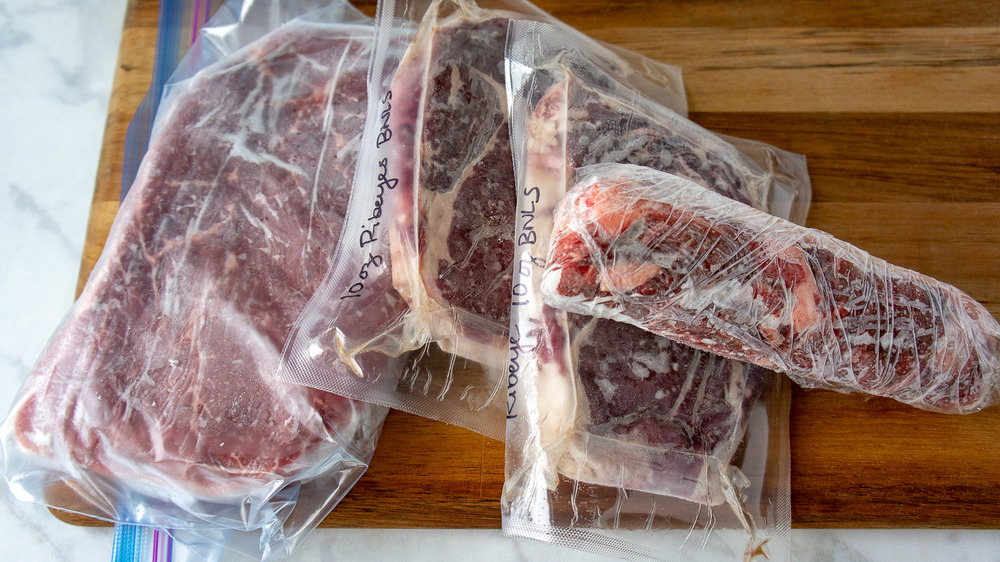
Ingredients
- Steak
- Bowl
- Cool water
Directions
- To defrost in the fridge, simply place the steak in a bowl or dish and allow it to come up to fridge temperatures, 24 to 48 hours, or until thawed through.
- To defrost the steak outside of the fridge, place your steak in a bowl large enough for the steak to fit inside.
- Fill with cool tap water so all sides of the steaks are surrounded.
- Check the water every 30 minutes. If the water is warm or icy, replace it with fresh cool water and flip the steak over.
- Repeat until the steak is thawed, then cook or transfer to the fridge.
- To defrost in the microwave, use the lowest setting and gently microwave the steak until just thawed. Cook immediately.
- Alternatively, heat oil in an oven-safe skillet and transfer the frozen steak directly into the pan. Sear on both sides, then transfer it to a preheated oven to finish cooking.
